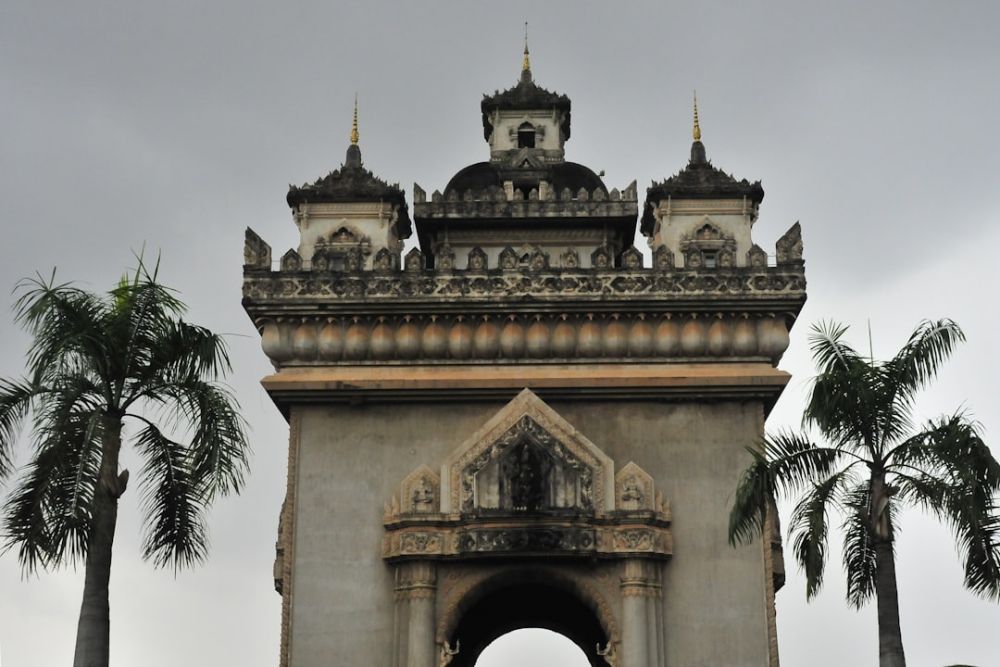

Vientiane's iconic landmark, the Patuxai Victory Monument, stands majestically in the heart of the capital city of Laos. Known as the 'Victory Gate' or 'Gate of Triumph,' Patuxai is one of the most prominent symbols of the country, drawing tourists from around the world. Its history as a tourist destination is intertwined with its role as a national monument.
Patuxai was constructed between 1957 and 1968 to commemorate the Lao people who died in pre-independence wars, particularly from the French colonialism period and WWII. It is often compared to the Arc de Triomphe in Paris but is uniquely Laotian, adorned with mythological creatures such as the Kinnari (half-woman, half-bird figure).
Since its completion in the late 1960s, Patuxai has been a central piece of Lao nationalism and cultural identity, subsequently making it a major tourist attraction. During the early years, tourists visited Patuxai mainly for its architectural beauty and cultural significance, though it was not as widely known internationally as some other Southeast Asian landmarks.
The 1990s brought a gradual increase in global tourism, and with the opening up of Laos to foreign visitors, Vientiane saw a surge of interest. Patuxai became a site that was not to be missed. Travelers would often gather here to enjoy panoramic views of the city from the monument's viewing platform.
Today, Patuxai is firmly established on the Laos tourism map. Recent trends have seen a push towards cultural tourism and ecotourism, and Patuxai plays a key role in showcasing the traditional aspects of Laotian culture. Tourists can explore the site's history, climb to the top for picturesque city views, and stroll through the Patuxai Park, where musical fountains were recently introduced.
There have been efforts by the Laotian government to preserve the integrity of Patuxai, ensuring that it remains a historical site that can be enjoyed by future generations. As tourism trends lean towards sustainable travel, Patuxai has been sustained with minimal commercialism in the surrounding areas, resisting the fast-paced developments seen in other Asian capitals.
Patuxai is open to the public every day, offering visitors the opportunity to climb to the terrace and take in the expansive views. The ground level hosts a series of souvenir shops where local vendors sell traditional Laotian crafts, making it easy for tourists to take home a piece of Laos with them.
With the evolution of global travel habits and an increasing emphasis on history and culture, it is expected that Patuxai will maintain its status as a premier destination in Laos. Alongside other historic sites in Vientiane, it illustrates the city's charm and continues to entice those looking to immerse themselves in Lao heritage.